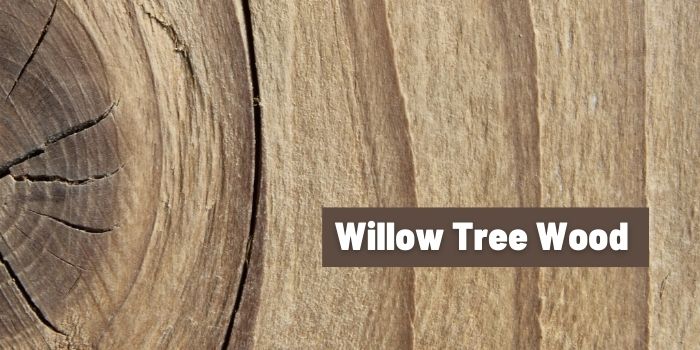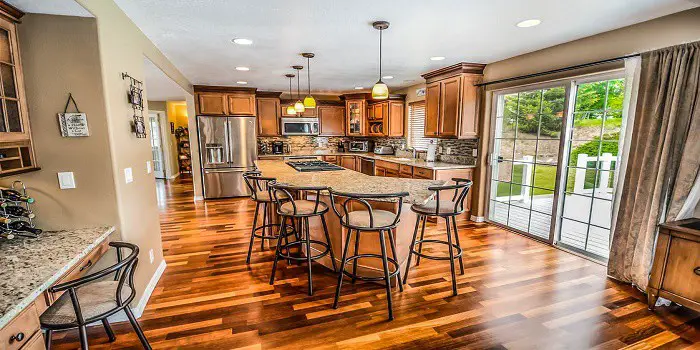
The willow tree is quite common in Europe and areas of Central Asia. It can grow to heights of 100 feet and its trunk can reach up to 4 feet in diameter.
Sometimes known as the White Willow, this tree should not be confused with the Black Willow which grows and is sold in the US.
The White Willow gets its name from the underside of its leaves which are pale white.
Although heavily used, this tree is still quite abundant and readily available in the European and Asian markets.
Willow Tree Wood
| Scientific Name: | Salix alba |
| Tree Size: | 65-100 ft (20-30 m) tall 3-4 ft (1-1.2 m) trunk diameter |
| Janka Hardness: | 570 lbf (2,530 N) |
| Type: | Hardwood |
| Odor: | No smell |
| Specific Gravity (Basic, 12% MC): | .34, .40 |
| Common Uses: | Baskets, utility wood, furniture, and cricket bats |
Appearance
Willow tree wood is considered lightweight, but it does have good resistance to shock.
However, it is not all that strong, so it should not be used for heavy projects unless plenty of wood is used.
Color
The hardwood itself has a color range that runs from pinkish brown to tan. While the sapwood is white in color with a yellow tint.
However, it can be difficult to tell where the hardwood ends and the sapwood begins.
Texture & Grains
One of the advantages that White Willow offers is its uniform texture which ranges from fine to medium.
The grains themselves are normally straight. This makes the tree quite useful for a wide variety of projects.
However, the downside is that this tree is quite susceptible to attacks from insects and is considered perishable, so unless the wood is properly treated it will rot.
There is no discernable odor to the wood unless it has been treated or it rots.
Willow Wood Workability
While it does have even grains and a good texture, the low density of the wood makes it difficult to get a clean cut.
In most cases, cutting with power tools will result in a surface that is fuzzy and lacking in the clean lines expected from similar woods.
When drying, defects can form in the wood as well. Meaning that for many it will have to be properly dried first with the imperfections addressed afterward.
On the positive side, White Willow does finish well, and it takes glue and similar adhesives readily.
What is Willow Tree Wood Used for?
Willow Tree Wood has a wide range of uses as it is found in numerous products. You can find this type of wood used for the following.
- Baskets, Crates, and Cricket Bats
- Carvings Utility Wood, and Furniture
This type of wood is also popular with small specialty items. This generally means small carvings or items that have been made for display purposes.
Willow Tree Wood is readily available for sale in Europe and Asian countries. It is not for sale in the US, although Black Willow is available.
The prices for Willow Tree Wood tend to run about the same as other, similar woods.
This type of wood tends to be heavily used because of its availability and even grains and texture.
It is not the easiest wood to use because of its limitations in strength, but it is well-priced and versatile enough for many projects.

Hi, I am Mark Garner a professional carpenter, woodworker, and DIY painter. I live in the small city of Peoria, Arizona as a semi-retired woodworker. I have started this blog with a simple motive to help you with my wood experience in this sector. If you like to know more about what I love doing and how it all got started, you can check more about me here.





